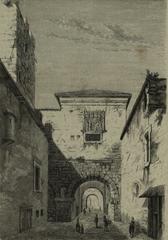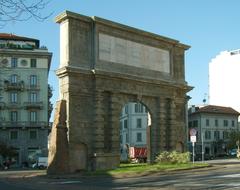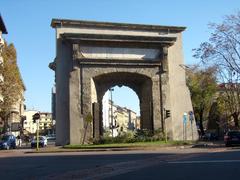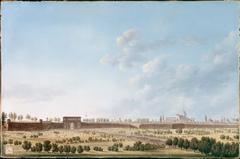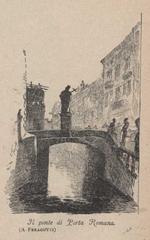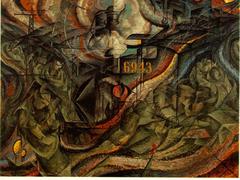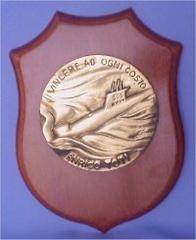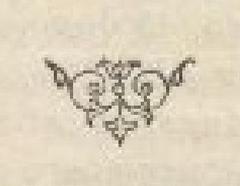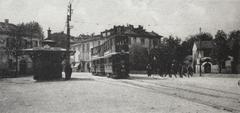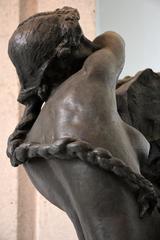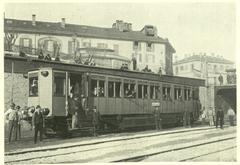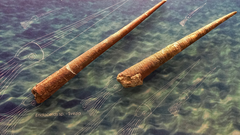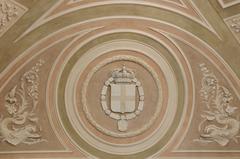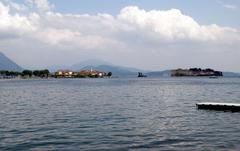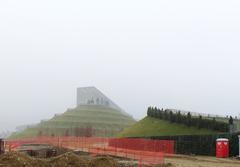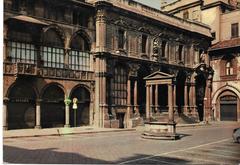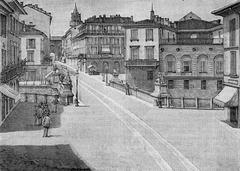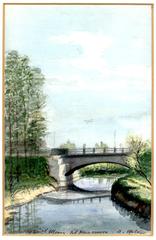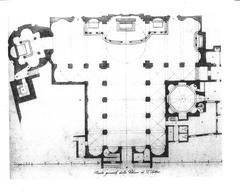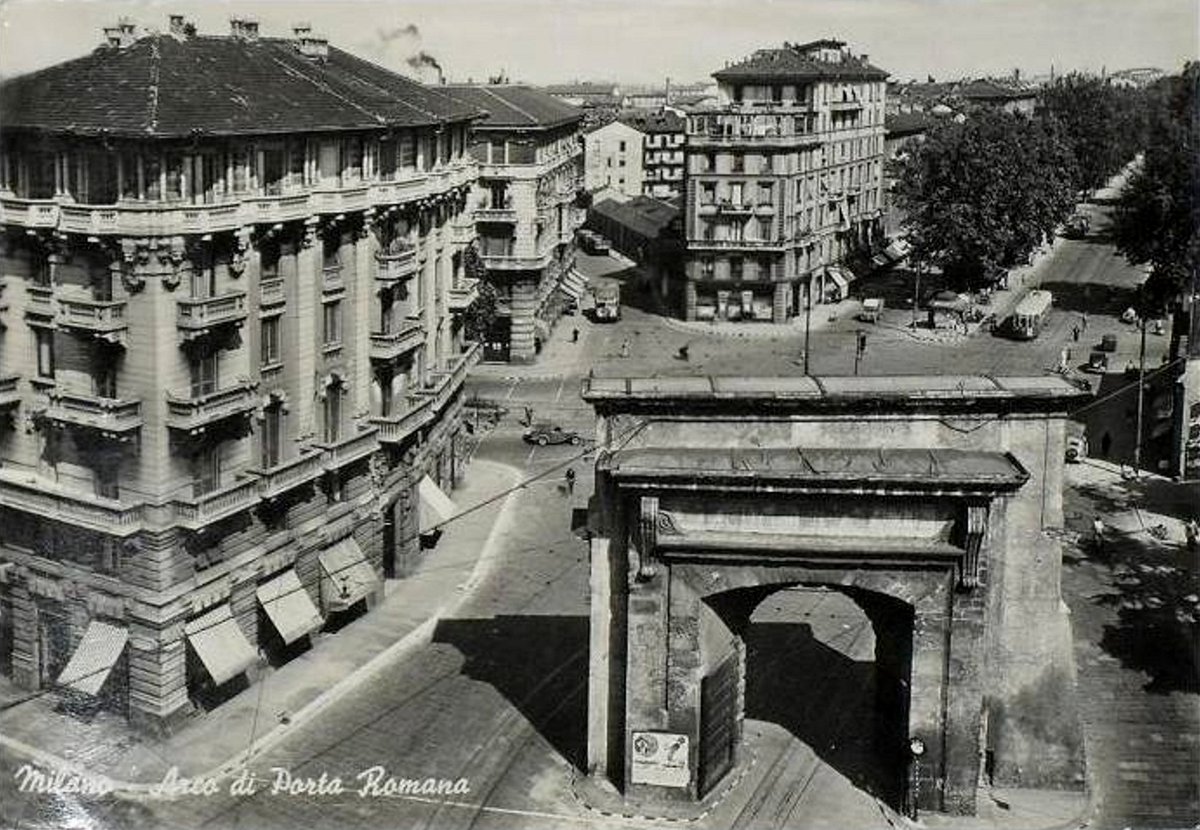
Comprehensive Guide to Visiting Porta Romana, Monza, Italy
Date: 19/07/2024
Introduction
Porta Romana in Monza, Italy, stands as a historical and architectural gem that beckons history enthusiasts and casual tourists alike. This ancient gateway, which dates back to the Roman era, has witnessed centuries of transformations, from its initial construction as part of the city’s defensive walls to its present-day status as a cultural landmark. Porta Romana’s blend of Roman, Gothic, Renaissance, and Baroque architectural styles makes it a valuable study for historians and an intriguing site for visitors. As a symbol of Monza’s resilience and historical continuity, Porta Romana offers a unique glimpse into the city’s past while remaining a functional part of its urban landscape (Britannica, UNESCO). This guide aims to provide comprehensive information on the history, cultural significance, visiting hours, ticket prices, and travel tips for making the most out of your visit to this remarkable landmark.
Table of Contents
- Introduction
- Origins and Historical Context
- Architectural Significance
- Role in Monza’s Urban Development
- Cultural and Symbolic Importance
- Restoration and Preservation Efforts
- Porta Romana in Modern Times
- Visitor Experience
- Getting There
- Best Time to Visit
- Accommodation
- Local Transportation
- Currency and Payments
- Language
- Safety
- Health and Emergency Services
- Dining and Cuisine
- Shopping
- Cultural Etiquette
- Accessibility
- Local Events and Festivals
- Photographic Spots
- Useful Apps and Websites
- FAQ
- Conclusion
Origins and Historical Context
Porta Romana, located in Monza, Italy, is a historical gateway that dates back to the medieval period. This ancient structure was part of the city’s defensive walls, which were constructed to protect Monza from invasions and attacks. The exact date of its construction is not well-documented, but it is believed to have been built around the 13th century, during a time when Monza was under the rule of the Visconti family, a powerful dynasty in Lombardy (Visconti Family).
Architectural Significance
The architectural design of Porta Romana reflects the typical medieval military architecture of the time. The gateway is characterized by its robust stone construction, with a large central arch flanked by two smaller pedestrian arches. The central arch was originally designed to accommodate horse-drawn carriages and later, motor vehicles, while the smaller arches were intended for foot traffic. The structure also features battlements and defensive towers, which were used for surveillance and defense against potential invaders (Medieval Architecture).
Role in Monza’s Urban Development
Porta Romana played a crucial role in the urban development of Monza. As one of the main entrances to the city, it facilitated trade and commerce by allowing merchants and travelers to enter and exit the city efficiently. The gateway also served as a checkpoint where goods were inspected and taxes were collected, contributing to the economic prosperity of Monza. Over the centuries, Porta Romana has witnessed numerous historical events, including battles, sieges, and royal processions, making it a silent witness to the city’s rich history (Monza History).
Cultural and Symbolic Importance
Beyond its practical functions, Porta Romana holds significant cultural and symbolic importance for the people of Monza. It is a symbol of the city’s resilience and historical continuity. The gateway has been preserved and restored multiple times, reflecting the community’s commitment to maintaining its historical heritage. Today, Porta Romana stands as a testament to Monza’s medieval past and serves as a cultural landmark that attracts both locals and tourists alike (Cultural Heritage).
Restoration and Preservation Efforts
In recent years, there have been concerted efforts to restore and preserve Porta Romana. These initiatives are aimed at protecting the structural integrity of the gateway while also enhancing its aesthetic appeal. Restoration projects have included cleaning and repairing the stonework, reinforcing the arches, and installing lighting to highlight the architectural features of the gateway. These efforts are supported by both public and private organizations, demonstrating a collective commitment to preserving Monza’s historical landmarks (Restoration Projects).
Porta Romana in Modern Times
Today, Porta Romana continues to be an integral part of Monza’s urban landscape. It is not only a historical monument but also a functional part of the city’s infrastructure. The gateway is located near several key attractions, including the Monza Cathedral and the Royal Villa of Monza, making it a popular starting point for tourists exploring the city. Additionally, Porta Romana is often featured in cultural events and festivals, further cementing its role as a central element of Monza’s cultural identity (Monza Tourism).
Visitor Experience
For visitors, Porta Romana offers a unique glimpse into Monza’s medieval past. The gateway is easily accessible and provides a picturesque backdrop for photographs. Information plaques and guided tours are available to educate visitors about the historical significance of the structure. Additionally, the surrounding area is home to various cafes, shops, and restaurants, allowing tourists to enjoy a leisurely day exploring the historical and cultural offerings of Monza (Visitor Information).
Practical Visitor Information
- Visiting Hours: Porta Romana is open to visitors daily from 9:00 AM to 7:00 PM.
- Tickets: Entrance to Porta Romana is free of charge, but guided tours may have a fee.
- Travel Tips: To avoid crowds, visit early in the morning or late in the afternoon. Wear comfortable shoes as the surrounding area is great for walking tours.
Getting There
By Air
The nearest major airport to Monza is Milan Linate Airport (LIN), approximately 20 kilometers away. From the airport, you can take a taxi or use public transportation to reach Monza. Alternatively, Milan Malpensa Airport (MXP) and Bergamo Orio al Serio Airport (BGY) are also viable options, albeit slightly further away.
By Train
Monza is well-connected by train. The Monza railway station is a major hub with frequent services to and from Milan, which is only about 15 kilometers away. Trenitalia and Trenord operate regular services. For schedules and tickets, visit the Trenitalia website.
By Car
If you prefer driving, Monza is accessible via the A4 motorway. Parking can be challenging in the city center, so consider using one of the several parking garages available.
Best Time to Visit
The best time to visit Porta Romana and Monza is during the spring (April to June) and autumn (September to October) when the weather is pleasant, and the tourist crowds are thinner. Summers can be hot and crowded, especially during the Formula 1 Italian Grand Prix in September.
Accommodation
Monza offers a range of accommodation options to suit different budgets:
- Luxury: Hotel de la Ville Monza (Hotel de la Ville) offers luxurious rooms and is located near the Royal Villa of Monza.
- Mid-Range: Helios Hotel (Helios Hotel) provides comfortable rooms and modern amenities.
- Budget: Ostello Costa Alta (Ostello Costa Alta) is a budget-friendly option located within the Monza Park.
Local Transportation
Public Transport
Monza has an efficient public transportation system operated by NET (Nord Est Trasporti). Buses are the primary mode of public transport within the city. For routes and schedules, visit the NET website.
Biking
Monza is bike-friendly with several bike rental options available. The city has dedicated bike lanes, making it easy to explore on two wheels.
Walking
Porta Romana and the surrounding areas are best explored on foot. The historic center is pedestrian-friendly, and walking allows you to soak in the local atmosphere.
Currency and Payments
Italy uses the Euro (€). Credit and debit cards are widely accepted, but it’s advisable to carry some cash for small purchases, especially in local markets and smaller establishments. ATMs are readily available throughout Monza.
Language
Italian is the official language. While English is commonly spoken in tourist areas, learning a few basic Italian phrases can enhance your experience and help in interactions with locals.
Safety
Monza is generally safe for tourists. However, standard precautions should be taken:
- Keep an eye on your belongings, especially in crowded areas.
- Avoid poorly lit areas at night.
- Be cautious of pickpockets, particularly in busy tourist spots and public transport.
Health and Emergency Services
Healthcare
Monza has several hospitals and clinics. The San Gerardo Hospital (San Gerardo Hospital) is the main hospital in the city, offering comprehensive medical services.
Pharmacies
Pharmacies are plentiful and can be identified by a green cross. They typically operate from 8:30 AM to 7:30 PM, with some open 24 hours.
Emergency Numbers
In case of emergency, dial 112 for police, fire, and medical services.
Dining and Cuisine
Monza offers a variety of dining options, from traditional Italian trattorias to modern eateries:
- Traditional: Trattoria Caprese (Trattoria Caprese) offers authentic Neapolitan cuisine.
- Modern: Ristorante Derby Grill (Derby Grill) provides a contemporary dining experience with a focus on local ingredients.
- Casual: Pizzeria del Centro (Pizzeria del Centro) is perfect for a quick and delicious pizza.
Shopping
Monza has a mix of high-end boutiques, local markets, and shopping centers:
- Via Italia: This pedestrian street is lined with shops selling fashion, accessories, and more.
- Mercato di Monza: Held on Thursdays and Saturdays, this market offers fresh produce, clothing, and local products.
- Centro Commerciale Auchan Monza: A large shopping mall with a variety of stores and dining options.
Cultural Etiquette
- Dress Code: Italians tend to dress stylishly. While casual attire is acceptable, dressing smartly is appreciated, especially when dining out or visiting religious sites.
- Dining Etiquette: It’s customary to greet with “Buongiorno” (Good morning) or “Buonasera” (Good evening). Tipping is not obligatory but appreciated for good service.
- Social Norms: Italians are known for their warmth and expressiveness. A friendly demeanor and basic Italian phrases can go a long way in making connections.
Local Events and Festivals
Monza hosts several events and festivals throughout the year:
- Formula 1 Italian Grand Prix: Held in September at the Monza Circuit, this event attracts motorsport enthusiasts from around the world.
- Monza Music Festival: A summer event featuring concerts and performances in various venues across the city.
- Christmas Market: During December, the city center transforms into a festive market with stalls selling gifts, food, and decorations.
Photographic Spots
Porta Romana and its surrounding areas offer numerous picturesque spots perfect for photography. Capture the historical gateway at different times of the day to see how the light transforms the scene.
Useful Apps and Websites
- Google Maps: For navigation and public transport information.
- Trenitalia: For train schedules and ticket bookings (Trenitalia).
- TripAdvisor: For restaurant reviews and travel tips (TripAdvisor).
- Visit Monza: The official tourism website for Monza (Visit Monza).
FAQ
What are the visiting hours for Porta Romana?
Porta Romana is open daily from 9:00 AM to 7:00 PM.
Do I need to buy tickets to visit Porta Romana?
No, you do not need tickets to visit Porta Romana as it is an open site. However, guided tours may require a fee.
How can I reach Monza from Milan?
You can reach Monza from Milan by train, car, or bus. The train is the most convenient option, with frequent services from Milan’s central station.
Conclusion
Porta Romana in Monza, Italy, is more than just an ancient gateway; it is a testament to the city’s rich architectural and historical heritage. Spanning from its Roman origins through medieval modifications and Renaissance enhancements to its modern-day preservation, Porta Romana encapsulates the evolution of architectural styles and urban development trends. Its robust stone construction, adorned with various historical elements, stands as a symbol of Monza’s enduring legacy. Today, Porta Romana continues to attract visitors, offering a picturesque backdrop for photographs and a starting point for exploring nearby attractions like the Monza Cathedral and the Royal Villa of Monza (Visit Monza, Lonely Planet). Ongoing restoration efforts ensure that this historical monument will remain a cherished landmark for future generations. Whether you are a history buff, an architecture enthusiast, or a casual visitor, Porta Romana provides a rich and immersive experience that is not to be missed.
References
- Britannica, Visconti Family, 2023 source url
- UNESCO, Cultural Heritage, 2023 source url
- Visit Monza, Monza Tourism, 2023 source url
- Lonely Planet, Monza Visitor Information, 2023 source url

